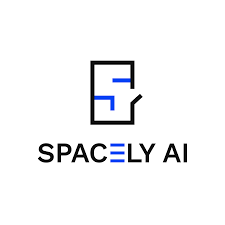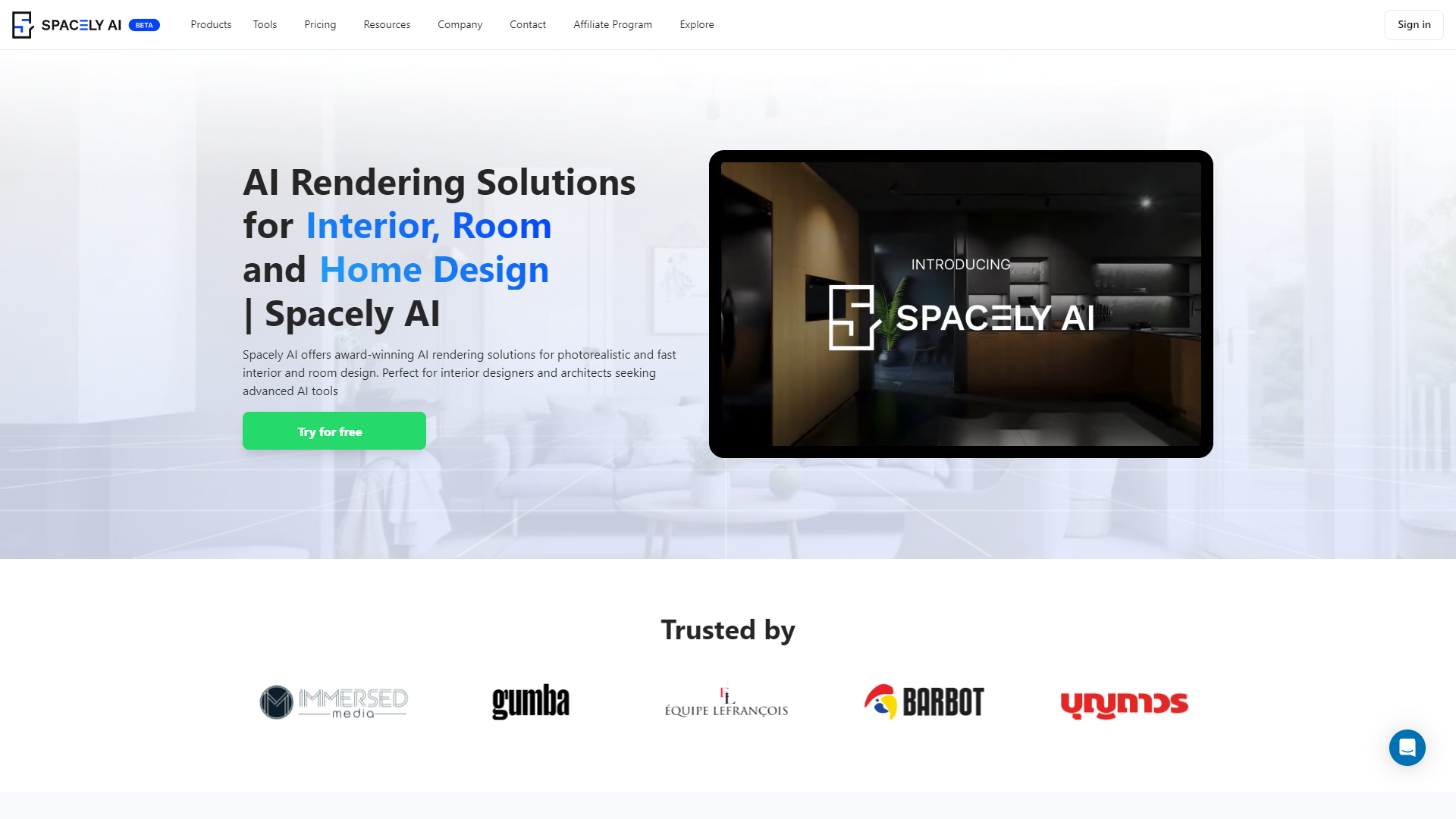Overview
Spacely AI revolutionizes the field of interior design and architectural visualization with its state-of-the-art Spatial Design Platform. This platform empowers interior designers and architects with the ability to produce photorealistic renders of room and building interiors swiftly and efficiently. By integrating seamlessly with popular 3D modeling tools like SketchUp and Revit, it offers a streamlined workflow that transforms 3D models into stunning visualizations in under a minute, thanks to its advanced Generative AI technology.
Starting at an accessible price of $39 per month, Spacely AI not only makes high-quality rendering affordable but also significantly reduces rendering costs by up to 90%. This efficiency gain enables a 285x faster turnaround for project bidding, enhancing productivity and reducing operational risks. The platform is continually updated with the latest in AI technology to maintain peak performance and reliability.
Beyond rendering, Spacely AI provides additional services such as AI Room Design and an API for tailored solutions, catering to diverse design needs. The company also supports its users with a wealth of resources like insightful blogs and a comprehensive FAQ section, ensuring a smooth and informed user experience. With its commitment to innovation and customer satisfaction, Spacely AI is a leading choice for professionals seeking cutting-edge AI rendering solutions in the design industry.
Key features
- Photorealistic AI rendering: Utilizes advanced Generative AI technology to produce high-quality, photorealistic renders from 3D models in under a minute.
- Seamless software integration: Supports easy import of 3D models from popular design software like SketchUp and Revit, enhancing workflow efficiency.
- Cost-effective subscriptions: Offers affordable monthly subscriptions starting at $39, significantly reducing rendering costs by up to 90%.
- Accelerated project delivery: Achieves a 285x faster turnaround for project bidding, enabling quicker client approvals and faster project completions.
- Continuous technology updates: Regularly updates its platform with the latest Generative AI models to ensure superior rendering performance and quality.
- Comprehensive support resources: Provides extensive support through blogs, FAQs, and tutorials to assist users in maximizing the platform's capabilities.
 Pros
Pros
- Flexible scalability options: Allows users to scale rendering capabilities based on project size and complexity, ensuring efficient resource utilization.
- Environmentally friendly: Reduces the need for physical prototypes, minimizing waste and promoting a more sustainable design process.
- Real-time collaboration features: Enables teams to collaborate in real-time, making adjustments and decisions quickly to streamline project workflows.
- Enhanced creative control: Provides advanced tools and settings that give designers precise control over lighting, textures, and materials in their renders.
- Multi-platform accessibility: Accessible on various devices and platforms, allowing users to work from anywhere without needing powerful hardware.
 Cons
Cons
- Hardware dependency: Requires high-performance computing hardware to efficiently handle the advanced Generative AI processing, potentially limiting accessibility for some users.
- Steep learning curve: Despite extensive support resources, the complexity of advanced features may require significant time to master fully.
- Internet reliance: Needs a stable and high-speed internet connection to effectively utilize cloud-based rendering capabilities, which could be a limitation in remote areas.
- Limited customization options: While efficient, the AI-driven process might offer less flexibility for manual adjustments or unique, artistic touches in renders.
- Software compatibility issues: Although it integrates with popular software, occasional compatibility issues with less common or older software versions may arise.









